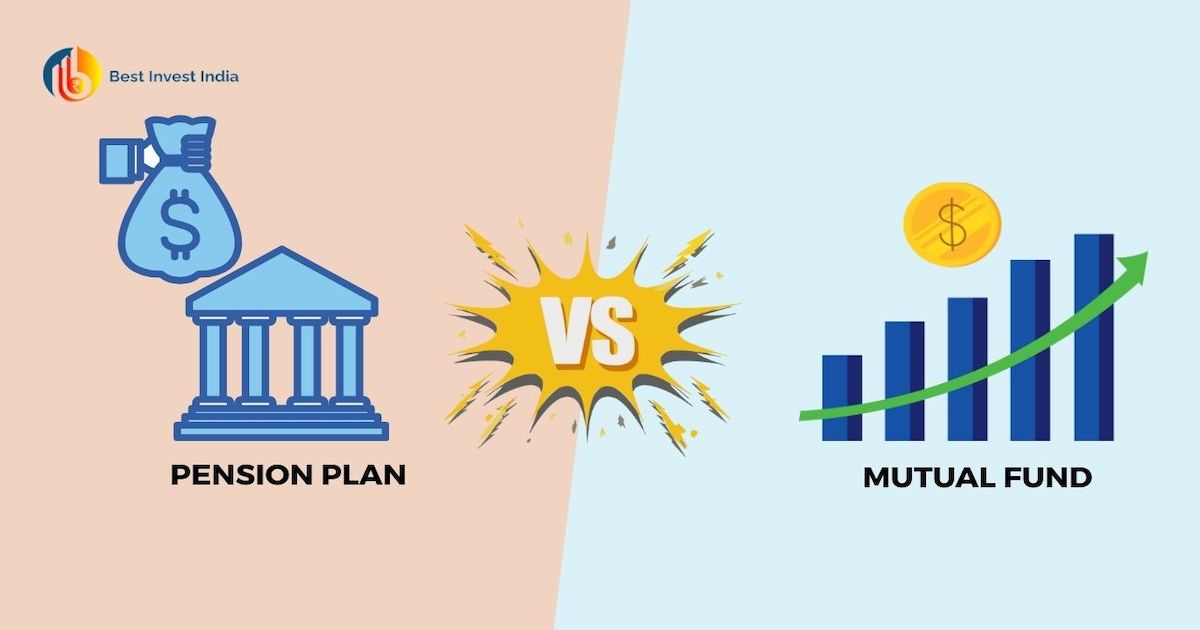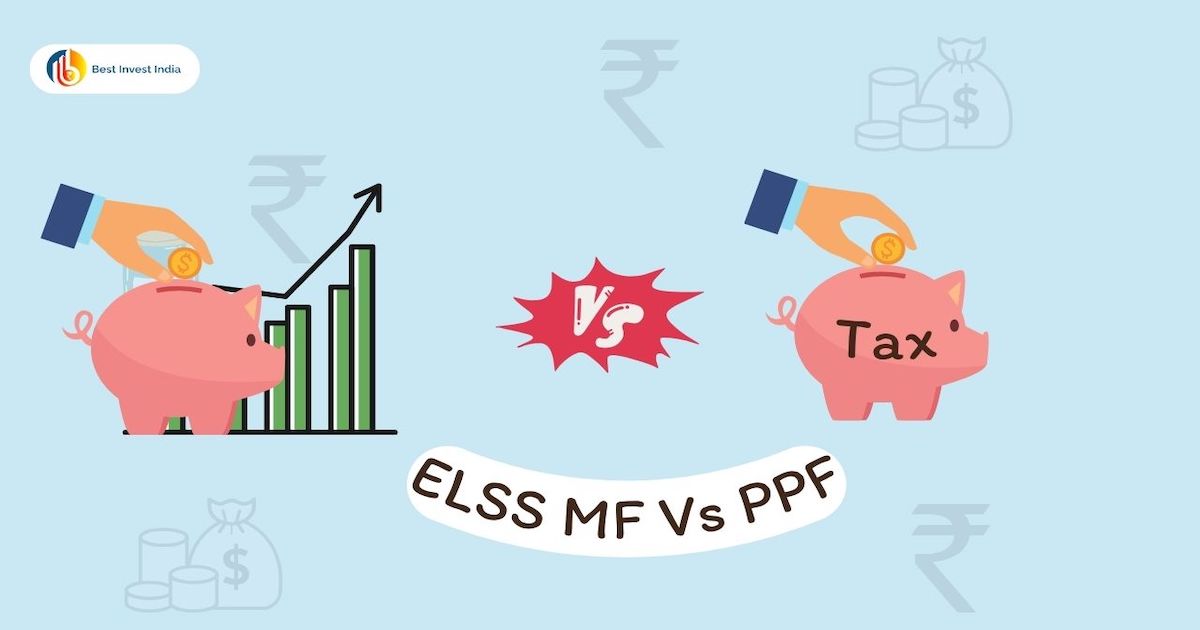When it comes to retirement planning in India, two of the most popular investment options are the National Pension System (NPS) and the Public Provident Fund (PPF). Both are backed by the government, offer tax benefits, and help in building a retirement corpus. However, they differ in structure, returns, and flexibility. Let’s break it down and evaluate NPS Vs PPF in simple terms so you can decide which one suits your financial goals.
Before knowing which one is better for retirement? Let’s first know a bit about both the products.
Table of Contents
What is NPS?
The National Pension System (NPS) is a market-linked retirement savings scheme regulated by the Pension Fund Regulatory and Development Authority (PFRDA). It allows you to invest in equity, corporate debt, and government bonds, thereby offering potentially higher returns compared to traditional fixed-income options.
- Who can invest? Any Indian citizen between 18–70 years.
- Minimum investment: ₹1,000 annually.
- Maximum investment: Rs 2 lac annually
- Maturity: At age 60 (with extension option), it can be extended and contribution can be given till age 70 years.
What is PPF?
The Public Provident Fund (PPF) is a government-backed savings scheme that offers guaranteed returns. It is ideal for risk-averse investors who want steady, tax-free growth over the long term. The PPF account can be opened at any post office or designated bank branch in India.
- Who can invest: Any Indian resident.
- Minimum investment: Rs.500 annually.
- Maximum investment: Rs. 1.5 lac annually.
- Maturity: 15 years (extendable in blocks of 5 years).
- Deposit mode: as a lump sum or in installments of up to 12 times in a year.
The interest rate on PPF is decided by the government and is revised every quarter. The best part of PPF is tax-free. interest.
Read more about PPF
Public Provident Fund (PPF)-Features And Benefits || PPF Account Benefits 2022
Public Provident Fund (PPF) Withdrawal Rules 2020
PPF Extension Rules- Can I Extend PPF Account After Maturity?
PPF Vs Mutual Fund -Which One Is Better (Detailed Comparison)
Top 10 PPF Account Benefits-You Must KNOW
Read More about NPS
National Pension Scheme(NPS)- All You Need To Know From Entry To Exit Rules
Latest NPS Withdrawal Rules 2022- Govt. & Corporates
How To Choose The Best NPS Fund Manager
NPS vs PPF: Key Differences
| Feature | PPF | NPS |
| Who can invest? | Any Indian Citizen can invest. One can also invest in minor name | Any Indian/NRI above age 18 and less than 60 can open the account |
| NRI Investment | NA | NRI can invest in NPS |
| Minimum Contribution in a Financial Year | Minimum Rs 500 | Minimum Rs 1000 |
| Maximum Contribution in a Financial Year | Maximum Rs 1.5 lac | There is no maximum limit but should not exceed 10% of basic and DA or 10% of gross total income or upto 2 lac |
| Maturity period | PPF account matures in 15 years. It can be extended for 5 year period with or without making future contribution | No fixed maturity date.One can contribute till age 60, but NPS contribution can be extended till age 70 years. |
Also Read: Latest Post Office Interest Rates July -Sep 2022
NPS Vs PPF -Type of Scheme
| Feature | PPF | NPS |
| Interest Rate | Current 7.1%Interest rate is guaranteed but changes as per RBI notifications | Market linked return |
| Safety | Safe | Returns are variable |
| Return Expectation one can take from the product | 7%-9% | 7%-12% |
| Pension | No pension is provided. After maturity, entire amount can be withdrawn | Compulsory buy Annuity/ pension plan from life insurance company ( From 40% amount). One can withdraw rest 60% |
NPS Vs PPF -Tax Benefit
| Feature | PPF | NPS |
| Tax benefit U/S 80 C | The amount of 1.5 lac get tax deduction U/S 80 C | The amount of 1.5 lac get tax deduction U/S 80 CCD(1) Additional 50000 tax deduction U/S 80CCD ( 1B) One can get 2 lac deduction under NPS |
| Maturity Taxation | The entire amount is tax free in nature. | 20% corpus amount is taxable in nature |
NPS Vs PPF -Premature Withdrawal
Premature closure and withdrawal is important from an investor point of view. However, the closure of NPS or PPF is not possible in between.
However, Premature withdrawal is permitted under special circumstances.
| Feature | PPF | NPS |
| Premature Withdrawal | After the seventh year, partial withdrawals are permitted with some restrictions. Loans are possible between the third and sixth fiscal years following account opening, although there are restrictions. | Account holders can withdraw money early and partially in certain situations after ten years. However, in order to leave the market before retirement, at least 80% of the earned corpus must be used to purchase a life insurance annuity. |
| Can I choose where to invest | No | Yes, One can choose from the 4 options equity, Corporate bonds, Govt. securities and alternative investments |
PPF and NPS – Interest rate
| Feature | PPF | NPS |
| Interest Rate | The current rate is 7.1% | Interest rate is not fixed. Since NPS is a market linked product the interest is variable in nature. |
| What you can expect | PPF interest rate is guaranteed but changes time to time as per RBI guidelines. | Since NPS is a market linked product, one can expect higher return than PPF |
Which One Should You Choose?
- Choose NPS if:
You are young (Gen Z or millennial) and can take some market risk.
You want to build a larger retirement corpus with higher returns.
You want extra tax savings beyond Section 80C. - Choose PPF if:
You prefer guaranteed, risk-free returns.
You want tax-free income at maturity.
You are conservative with investments and want long-term safety.
FAQ
Can we take NPS and PPF Both?
Investment in both NPS and PPF is possible. One can invest in PPF for fixed returns and simultaneous investment in NPS for market linked returns.
Can I invest 1.5 lac in PPF and 50K in NPS?
Yes, one can claim a deduction of 1.5 lac U/S 80C in PPF and can make additional investment of 50K in NPS and claim a deduction U/S 80CCD(1B).
PPF Vs NPS- which is a better option for retirement?
PPF and NPS both provide a fair amount of safety. PPF provides safe returns whereas NPS provides market linked variable returns. Which one will be better for retirement depends on personal risk appetite and financial circumstances and retirement goals.
Conclusion
PPF is a good choice for risk averse investors since it provides safe and secure return for a long duration. One can link various life goal such as Retirement, kids education, wedding or other with PPF.
Whereas NPS is a market-linked retirement scheme. If you want higher growth and can stay invested for the long term, NPS is a better choice.
Both NPS and PPF pla
In fact, many financial planners recommend investing in both – NPS for growth and PPF for stability – to balance risk and security in your retirement portfolio.
Read more about How to plan Retirement in India
Why Is Retirement Planning Important?
9 Super Easy Steps To Retirement Planning










